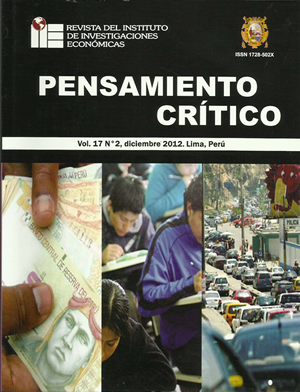La población de las zonas urbano marginales de Lima y la demanda por educación universitaria estatal periodo 1980-2010
DOI:
https://doi.org/10.15381/pc.v17i2.8935Keywords:
Marginal urban areas, migration, candidates, vacancies.Abstract
The concentration of populations in marginal urban areas, are in a process of relative growth, so we have the second half of the twentieth century, as a result of migration that have their origin in search of better living conditions (security, education, health, employment, housing, etc.), were established dozens of settlements that later became developments and today some prosperous and thriving districts (San Juan de Lurigancho, San Martin de Porres, San Juan de Miraflores Ventanila, Los Olivos, etc), districts which come most of the leading candidates to national universities of our capital, as well as to form the largest proportion of the student population. So we have a predominant factor for the study of the evolution of the demand for university education constitutes State the incidence of the concentration of population in urban fringe areas, given its influence on the behavior of the educational system enrollment at all levels, a situation that can be seen with the highest incidence in the city of Lima.Downloads
Published
Issue
Section
License
Copyright (c) 2012 Ysaac Ospino Edery

This work is licensed under a Creative Commons Attribution-NonCommercial-ShareAlike 4.0 International License.
THE AUTHORS RETAIN THEIR RIGHTS:
a. The authors retain their trademark and patent rights, and also on any process or procedure described in the article.
b. The authors retain the right to share, copy, distribute, execute and publicly communicate the article published in Pensamiento Crítico (for example, place it in an institutional repository or publish it in a book), with recognition of its initial publication in Pensamiento Crítico.
c. The authors retain the right to make a subsequent publication of their work, to use the article or any part of it (for example: a compilation of their works, notes for conferences, thesis, or for a book), provided they indicate the source of publication (authors of the work, journal, volume, number and date).















